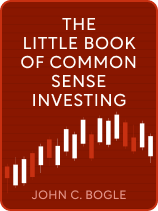

This article is an excerpt from the Shortform book guide to "The Little Book of Common Sense Investing" by John C. Bogle. Shortform has the world's best summaries and analyses of books you should be reading.
Like this article? Sign up for a free trial here.
What is the portfolio turnover rate in mutual funds? How does a mutual fund’s portfolio turnover compare to turnover in index funds?
Portfolio turnover is the ratio of a portfolio’s total assets to its total purchases and sales. Because higher portfolio turnover creates more fees, such as commissions to stockbrokers, mutual funds cost investors more money due to their higher turnover rates.
Keep reading to learn how to evaluate portfolio turnover rates.
Portfolio Turnover
What is the portfolio turnover rate in mutual funds? According to Jack Bogle, the author of The Little Book of Common Sense Investing, turnover costs are approximately 1% of turnover rate. To illustrate, a mutual fund with 40% turnover would cost investors about 0.4% in associated fees. Moreover, Bogle observes that in 2016, sales and purchases within mutual funds totaled $6.6 trillion, or 78% of the total $8.4 trillion in mutual fund assets. Consequently, he concludes that the average mutual fund costs another 0.78% to its investors.
(Shortform note: Scholars have confirmed that high-turnover activity has a statistically significant negative correlation with average returns—in other words, actively managed funds with greater trading activity tended to deliver lower returns than those with less trading activity. Consequently, some experts caution against investing in funds with turnover rates above 30%.)
By contrast, because index funds are held indefinitely, they have little-to-no turnover costs. In fact, Bogle states that the TIF’s annual portfolio turnover is about 3%, costing investors a minuscule 0.03% of their assets.
(Shortform note: Index funds only require turnover when their underlying index changes its composition. For example, between 20 and 25 stocks leave the S&P 500 annually, meaning that 20 to 25 new stocks enter the S&P 500 annually. Consequently, index funds that track the S&P 500 sell their shares of stocks that left the S&P 500, then purchase shares of stocks that joined the S&P 500.)
(Shortform note: According to some experts, high portfolio turnover is a symptom of short-termism: The tendency to focus on short-term gains to the detriment of long-term success. For example, some have claimed that quick-trading hedge funds are too focused on turning a short-term profit. Still, others observe that portfolio turnover rates have remained steady since 2005, indicating that short-termism isn’t becoming more rampant, at least.)
The Hidden Cost of Taxes
In addition to turnover fees, Bogle also argues that mutual funds lose more money to taxes because of their high turnover rates.
Mutual funds are tax-inefficient, Bogle claims, because stocks held for less than a year are considered short-term gains. Further, because short-term gains are susceptible to personal income tax, mutual funds with high turnover rates can leave investors on the hook for personal income tax—up to 37% for the highest tax bracket.
Profit from index funds, on the other hand, is considered a long-term gain, since index funds are normally held for longer than a year. Consequently, index fund investors only pay a capital gains tax, which is normally 15%. So, Bogle concludes that mutual funds cost investors more in taxes than index funds.
| How to Minimize Taxes Owed on Investments To maximize your return on investment, experts recommend a variety of strategies to reduce the taxes that you owe. These strategies include: = Purchase government bonds, the returns of which are typically exempt from federal income tax. – Consider investing in a traditional 401(k), which decreases your current taxable income. Or consider investing in a Roth IRA, which you invest in with post-tax money, making your later withdrawals tax-exempt. – Implement tax-loss harvesting by selling underperforming stocks, which in turn reduces net capital gains from other successful stocks, decreasing your amount owed in capital gains taxes. |

———End of Preview———
Like what you just read? Read the rest of the world's best book summary and analysis of John C. Bogle's "The Little Book of Common Sense Investing" at Shortform.
Here's what you'll find in our full The Little Book of Common Sense Investing summary:
- A simple winning strategy for novice investors
- Why index funds are superior to mutual funds
- Why bonds belong in your investment portfolio






